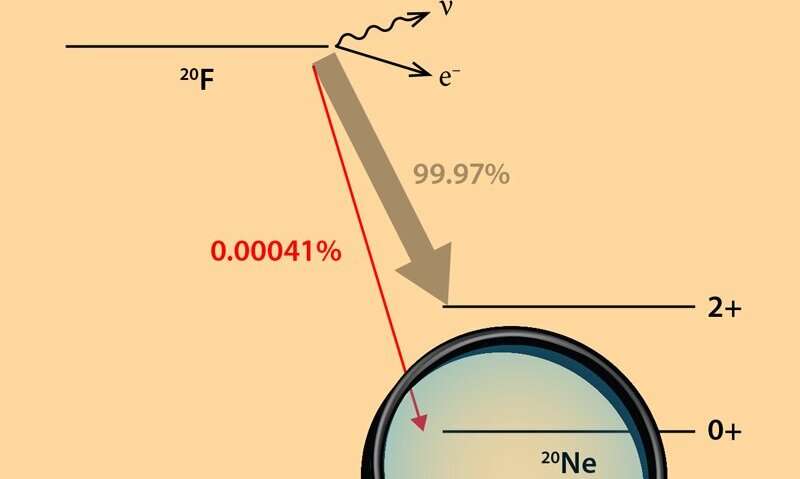January 7, 2020 report
Scientists accurately measure the probability of electron capture by the neon-20 isotope nuclei for the first time

A large international team of researchers has empirically measured the probability of electron capture by the neon-20 isotope (20Ne) for the first time. The team has published two papers in the journal Physical Review C describing their achievement and explaining how their experiments pertain to the decay of intermediate-sized stars.
Prior research has shown that at the end of their life, small stars form white dwarfs before dropping their outer layers. And large stars end with a supernova burst, resulting in the formation of a neutron star or black hole. How intermediate stars die has not been so well defined. Some research has suggested that they lose mass and become white dwarfs; others have found that they burst like the larger stars. Prior research has also shown that one of the defining factors that determines which way an intermediate star will die is the rate of electron capture by 20Ne and, as a result, the rate at which fluorine-20 (20F) appears. But until now, the probability of transition by such nuclei had not been accurately measured in a laboratory experiment. In this new effort, the researchers have done just that.
The experiments were carried out at the JYFL Accelerator Laboratory in Finland. There, the researchers bombarded a carbon foil with 20F nuclei, forcing them to become embedded in the foil—they then measured the radioactive decay. Next, they calculated the probability of a transition. They report that they found 0.00041 percent of 20F nuclei decayed to 20Ne0+.
The team then applied what they had learned to intermediate star death. Using the results from their experiments, they found that there was a large (eight times) increase in the rate of electron capture. Because it was so large, the researchers suggest it would lead to oxygen fusion at lower densities. The resulting detonation would therefore have to be relatively small, not a supernova. The end result would be a white dwarf. When they ran simulations using their findings, they all ended with the formation of a white dwarf. Thus, they conclude, it appears unlikely that intermediate stars wind up as neutron stars or black holes.
More information: O. S. Kirsebom et al. Discovery of an Exceptionally Strong β -Decay Transition of F20 and Implications for the Fate of Intermediate-Mass Stars, Physical Review Letters (2019). DOI: 10.1103/PhysRevLett.123.262701
O. S. Kirsebom et al. Measurement of the 2+→0+ ground-state transition in the β decay of F20, Physical Review C (2019). DOI: 10.1103/PhysRevC.100.065805
Journal information: Physical Review Letters
© 2020 Science X Network





















